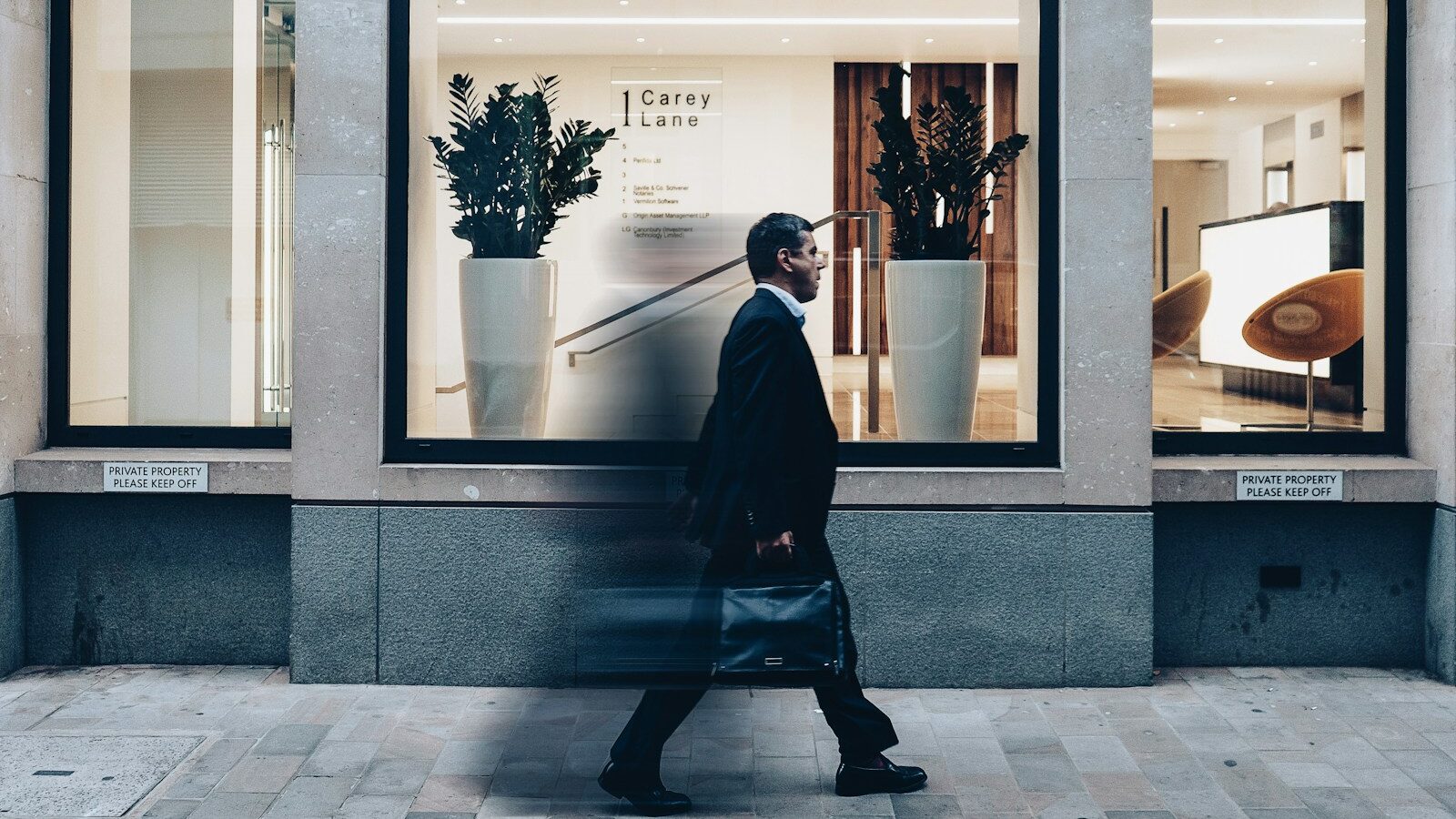
Productivity is bubbling over in an open necked shirt and a pair of 501s; latest findings suggest that the traditional armoury of the office, the suit is hampering our creative juices.
Just as the handy blackberry has crept into the realms of the ordinary and acceptable so has ‘dress down’ day. The tradition of offices across the UK for workers to discard their traditional suit and mark the end of the week in a carefully selected apparel – perhaps a t-shirt emblazoned with the name of the latest rock concert attended has become part and parcel of office life.
And according to Peninsula employment law firm, it’s a good thing. Seven in ten bosses in their study believe ‘dress down’ days are having a positive impact on productivity and performance.
Employees have also warmed to the idea with 88% feeling more at ease in casual clothing and 63% finding formal dress codes at work restricting.
Peter Done, Managing Director of Peninsula commented:
“The traditional view of business people’s dress at work is changing with the shirt and tie image diminishing, it is not unheard of to see directors in casual clothing brimming in their own confidence and asserting their own style to feel at ease in their workplace.
“Dress down’ days have proved a revelation and have played a part in revealing employees self assurance in themselves and confidence in their work performance, void of being stifled in a suit indicating a trend which I see continuing across various industries and companies of all sizes.”
In the Blairite days of open-necked shirts, hugs and kisses all round the move is seeing approval from those that rank from on high. Reported in the Sunday Times last week, Minette Marrin commented on the news of Sir Andrew Turnbull, the outgoing cabinet secretary who made a speech in which he welcomed a future without ties.
But according to Marrin it’s not something to be applauded.
“The people who started the trend of going tieless were people whom nobody trusted in the first place – artists, film producers, media executives and junk-bond traders. The few people whom we need to trust our doctors, lawyers and accountants still have to wear ties (unless they are women). But no doubt even this is disappearing and before long our consultants will examine us in blousons and bomber jackets and undertakers will dispatch us in sober designer casuals.”
Something you’ll agree that doesn’t perhaps gravitate towards the sense of occasion.
And even if we can come to eventually accept the death of the suit as we have done with the passing of the typed ‘memo’ can the replacement of a more casual outlook really help to burgeon and promote levels of innovation and productivity?
There is a slight irony of workers turning up in their ‘informal’ wear desperately trying to look relaxed and nonchalant while at the same time clutching their ‘how to relax’ and ‘manage stress’ books.
Indeed it’s not really all about the clothes is it? After all I could be dressed ‘down’ in my most relaxing PJs, feet cloaked in bedtime slippers but be the most stressed person around.
Flicking through the Times 100 Best Companies to work for it’s quickly apparent that they’re the best not because they share a love of high-street retailing but a culture in which productivity, performance and innovation are recognised and allowed to thrive.
Holding onto their title for an impressive second year running, manufacturers of the breathable water-resistant fabric, WL Gore put it down to a flat company structure and the absence of a top tier of management.
John Kennedy, head of the UK associates says: “Sometimes it’s a tough environment if you don’t have any frames of reference. But if you do any basic fundamental research into management, you know if you can get people to also think [what you’re suggesting] is a good idea you’re going to get things to happen a lot better and stick a lot longer.
“That’s not rocket science. It’s pretty simple stuff, but it’s amazing how many companies can’t get their heads round that.”
Like Marrin I feel slightly uncomfortable in letting all our professions go the way of Silicon Valley and new media when it comes to dress code and while I feel rather indifferent about the odd casual dress day here and there, I do believe that Peninsula might have slightly missed the point.
Can a pair of Levi’s after all be entirely responsible for productivity gains and the invention for the cure of cancer? I think not.
More Editor’s Comments
- Hiding behind the arras
- The recruitment catwalk
- Doughnuts, Dementors and Daring!
- Plastic fantastic
- Laissez faire … the best option?
- Innovate or fail?
- Under control?
- Sugar … I’m fired!
- Living to work or working to live?
- Can workplaces survive without leaders?
- Leadership the Ramsay way
- ‘Job-hopping’ – does HR care?
- Budget 2005 – High fives from HR?
- The Vox Pop of Volunteerism
- Tipping the balance on race equality
- Reward – the cash-cow
- Finding love in the concrete jungle
- The Darwinism of Trade Unions
- ‘Fat’ attacks UK plc
- Bricks and mortar trap workers
- Lighting the torch for jobs creation in 2012
- Forty winks in 2005?
- 2004 the HR Year in Review
- Ditch the bah humbug!
- The folly of ‘presenteeism
- Did Brown forget the demographics?
- Fashion bites – the rise of dress ‘down’ Friday
- Raising the game to woo parent voters
- Stress in the 21st century
- Reflections on the CIPD annual conference 2004
- Campaigners fired up for UK smoking ban
- Beating the pension time bomb
- Can Royal Mail rise above the taunts?
- The changing face of conflict at work
- HR – ‘big hat no cattle’?
- Are more bank holidays the answer?
- Working the reward schemes
- ‘Compensation culture’ – fact or fiction?










4 Responses
Dress to impress?
Surely it is down to the individual to decide, ultimately, what they are most comfortable in?
Where no dress-code exists and you are not meeting your most important client, what does it matter what you wear whilst answering the phone in the comfort of your own office?
Honestly, who has not thought of ditching their suit & tie in the recent hot weather?
I did – & my work still gets done! Shock! Horror!
Mike
Disclaimer: As I write this I’m wearing a tee-shirt and jeans an
One of the great advantages of a casual dress code is that it’s far more accepting of a modern multi-cultural work force.
Have you noticed that no working women ever hanker after the days of high heels, tight skirts and stockings?
Dressing down?
I am never more comfortable in a business envirnment (“normal” temperatures assuming) than when wearing a suit and tie!
To “suit “the occassion?
There is perhaps a tendency for organisations to slip into the latest trends for the sake of it.
I suspect that dress down day probably arose from the introduction of early finish on Fridays – who wants to go out wearing a suit for Friday afternoon out?
Surely it is a matter of what dress is appropriate for the organisation or even for the particular function (HR, accountant, etc).
For instance, I used to work for a company which employed a lot of creative people such as packaging designers, fashion designers, artists, creative engineering, games developers, etc. It would have stifled their creativity and made recruitment difficult if we had insisted that they all wore suits and ties. Consequently, there were some very interesting ideas of appropriate work wear!
On the other hand, would you feel comfortable going to see your accountant, pesions advisor or expensive management consultant to find him/her in t-shirts, jeans and old trainers?
Conventional dress codes also create less issues of appropriateness, whereas, at what point (and who) decides when the bounds of appropriate dress lie when there is no dress code?
Relaxation of suit and tie codes is probably a good thing but I think that most organisations need to set some dress code (Human Rights Act etc permitting).
Peter